From Concept To Combat: Making Multi-Domain Battle Real
Posted on
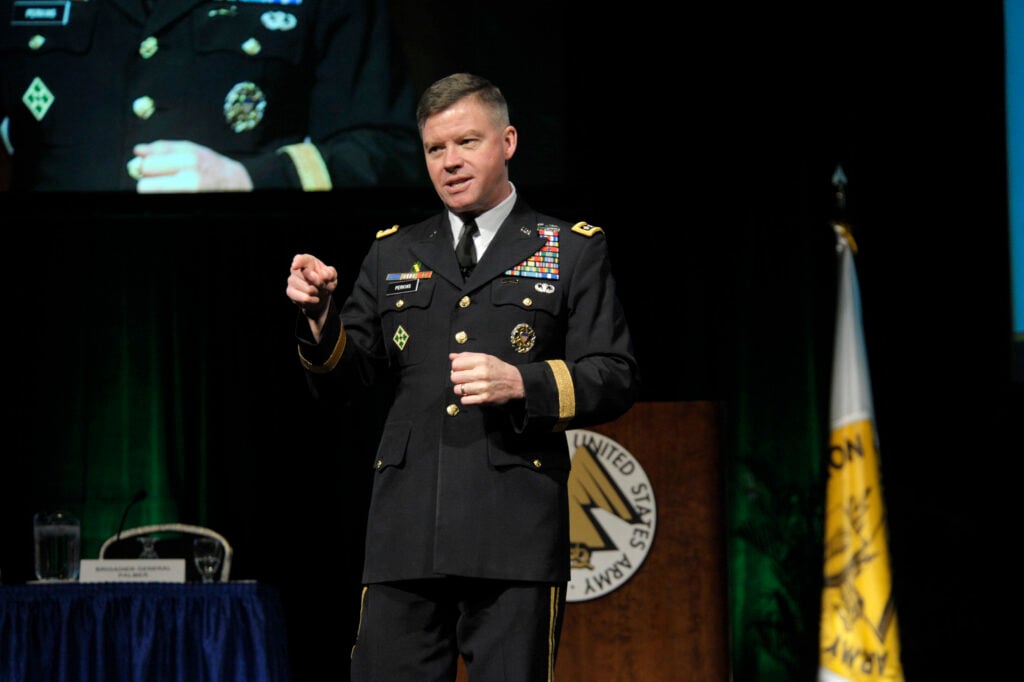
Gen. David Perkins
WASHINGTON: The concept called Multi-Domain Battle – a single seamless offensive across land, sea, air, space, and cyberspace – may seem futuristic, but the Army wants to start implementing at least parts of it right now. In wargames, doctrine, and interservice dialogue, “it’s actually becoming reality,” said Gen. David Perkins.
As one of the fathers of Multi-Domain Battle and head of the Army’s powerful Training and Doctrine Command, Perkins laid out three main efforts in a roundtable with reporters yesterday:
- Wargames: The Army and Marines are jointly creating an experimental unit, the Multi-Domain Task Force. The roughly 1,500-strong formation will join in ongoing multi-domain exercises sponsored by Adm. Harry Harris, head of Pacific Command and the Navy’s most vocal advocate of the Army’s Multi-Domain Battle concept.
- Collaboration: Army leaders are consulting with the other services and foreign militaries. One prominent example is a February conference among leaders of the Army’s Training & Doctrine Command, the Air Force’s Air Combat Command (ACC), Navy Fleet Forces Command, and NATO’s Allied Command Transformation, all conveniently close together in coastal Virginia. Perkins and ACC commander Gen. James Holmes are co-writing a paper on the concept.
- Doctrine: This fall, TRADOC will issue a new edition of its pivotal Field Manual 3-0, Operations, that will incorporate Multi-Domain Battle. The Air Force, Navy, and Marines have all had input on the document, Perkins said. A new manual may seem a modest step, but for the first time, Multi-Domain Battle evolves from a broad concept about future operations into specific doctrine the Army can execute here and now.
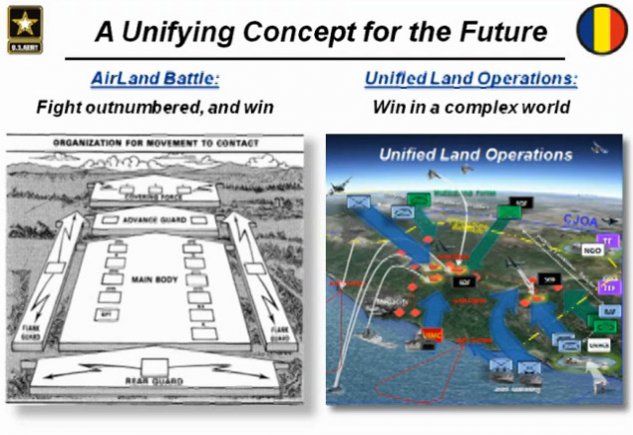
Army combat doctrine has grown more complex since the 1980s heyday of AirLand Battle.
The Meaning of a Field Manual
“Everything now has been concepts,” Perkins enthused. “We’re going to put out a field manual on how do we actually do this.” True, some parts of Multi-Domain Battle can’t be implemented without new technology, such as the improved command-and-control network the Army is now studying, or the anti-ship variant of the ATACMS missile being developed by the Pentagon’s Strategic Capabilities Office. But the Army can do new things with old weapons if it has new ideas, he said.
Perkins didn’t preview the new doctrine in detail, but he did say the field manual would lay out a new “intellectual framework of the battlefield.” The Army’s current framework was laid out in a previous edition of FM 3-0, the AirLand Battle doctrine, which taught commanders not to wait for the Soviets to come to them, but rather to strike deep into the enemy rear echelons with aircraft and precision weapons, at the same time their ground forces clashed along the front line. AirLand Battle proved devastating in two invasions of Iraq. But the doctrine’s tidy, linear division of close battle, deep battle, and safe rear area broke down in the chaos of counterinsurgency. Now AirLand Battle’s successor, Multi-Domain Battle, envisions a single continuous conflict ranging from point-blank infantry battles to stealth airstrikes, from GPS jamming to cyber attacks against the US power grid.
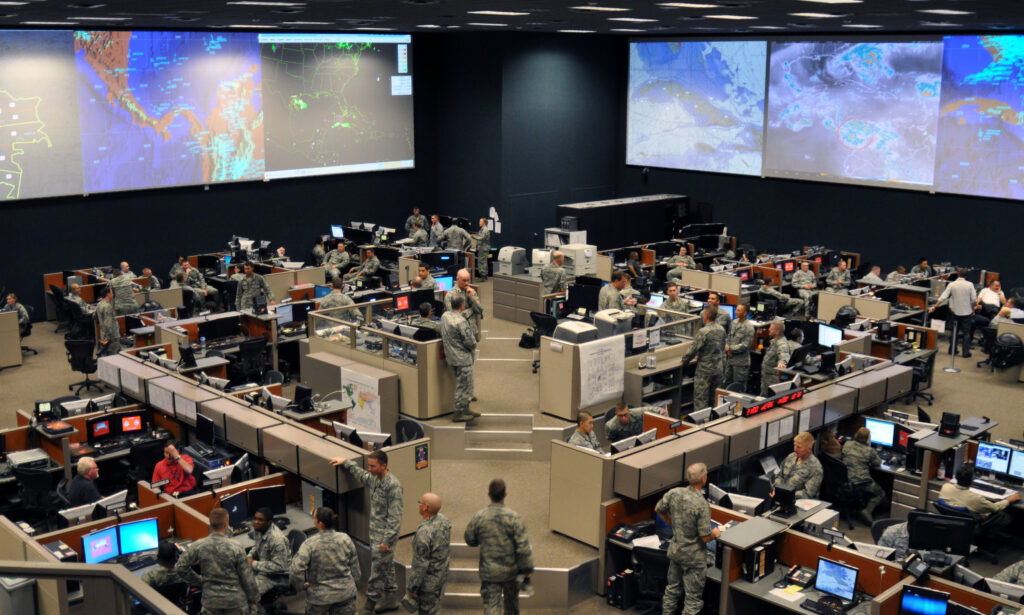
12th Air Force Combined Air Operations Center (CAOC).
Making The Network Work
How to coordinate such a sprawling, complex combat? That’s something the US Air Force has thought particularly hard about — in its longstanding Coalition Air Operations Centers, its nascent National Space Defense Center (formerly JICSPOC), and its new concept of Multi-Domain Command & Control. “MDC2” is a sister concept to the Army’s Multi-Domain Battle and a personal priority for Air Force Chief of Staff Gen. David Goldfein. So the two services are consulting closely, for example with Perkins and Air Combat Command’s Gen. Holmes co-authoring an article on merging their services’ concepts.
The Air Force’s unique contribution is decades of experience operating over intercontintental distances. Long-range bombers can launch from the United States to provide close air support to infantry squads in Afghanistan. What’s more, a single multi-mission aircraft, like the F-35, might play different roles – airstrike, reconnaissance, electronic warfare – for different commanders in a single sortie.
“They have to provide command and control over very large distances,” Perkins said of the Air Force. “We’ve just got to make sure as they do that and come up with a solution, it’s also applicable to infantrymen on the ground….If you have a network that can support the Joint Strike Fighter moving at 1,200 miles an hour over vast distances, does it still offer some capability to the dismounted infantry moving at two and a half miles per hour?”
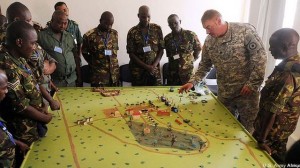
An Army sergeant instructs East African soldiers.
“This becomes one of the long poles in the tent,” Perkins said. “How do we weave this together?”
It’s not just the US armed services that have a stake in getting a network that works for all of them: So do foreign allies. Getting compatible equipment, from radios to fuel hoses, is hard enough even in long-established alliances like NATO, and modern operations often draw on ad hoc coalitions of the willing, with widely different levels of technology, security, and information sharing.
The problem isn’t that we can’t connect, Perkins said: It’s that we connect either too much or not at all. Network access is binary, all or nothing, with no fine gradations between locking an ally out entirely or letting them see everything. Instead of controlling access to the network, he said, we need to control access to the data, giving our most trusted partners permission to see more and others less. Cable companies already do this when they give their high-paying customers premium channels while cheapskates like himself just get the basics, Perkins said, so why can’t we apply the same principle – he calls it “selective interoperability” — to coalition warfare?
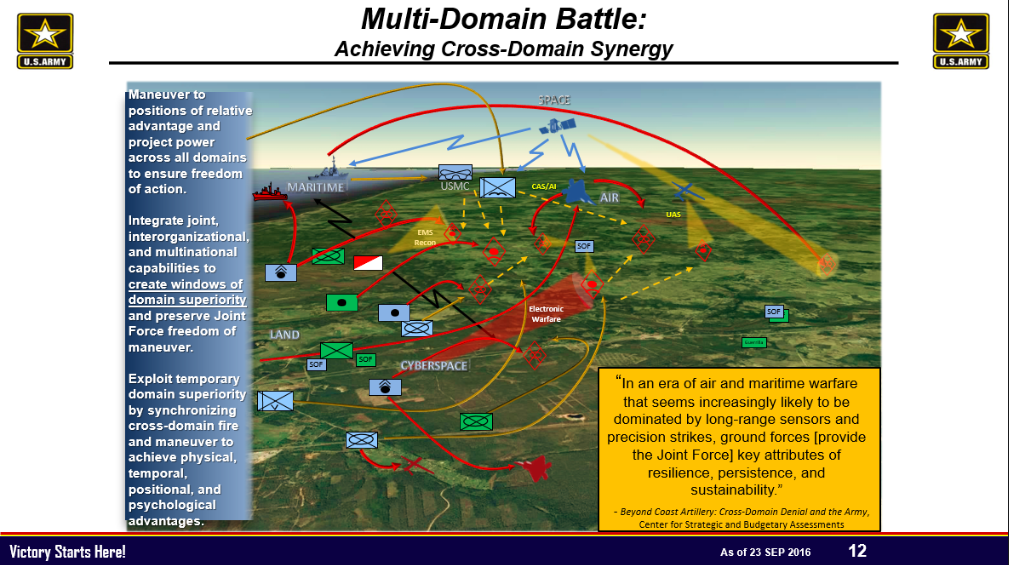
An Army slide attempting to explain the service’s new Multi-Domain Battle concept
Ideas First
Of course, there are endless devils in the details, which is why it’s important to thrash them out in field exercises and wargames where bright ideas meet messy reality. “It becomes a good forcing function,” Perkins said. “Getting it into the field, doing a training exercise, doing a wargame it now generates other intellectual questions we have to ask.”
That’s the importance of the Multi-Domain Task Force in the Pacific, as well as similar exercises in Europe. It’s vital to thrash out the ideas before investing in new hardware, Perkins said.
“A lot of times people — especially in this city — they’re like, ‘what are you gonna buy differently?’” Perkins said. And the Army will need to buy new technology at some point, he said. But what the service is learning from its experiments and exercise, he went on, is that “some of our biggest constraints aren’t our weapons systems. It’s our lack of doctrine and concepts on how to use them.”
The intellectual work has to come first, Perkins said: “Our biggest challenge is that we will excessively limit ourselves….We are capable of more than we think we are.”
Subscribe to our newsletter
Promotions, new products and sales. Directly to your inbox.
